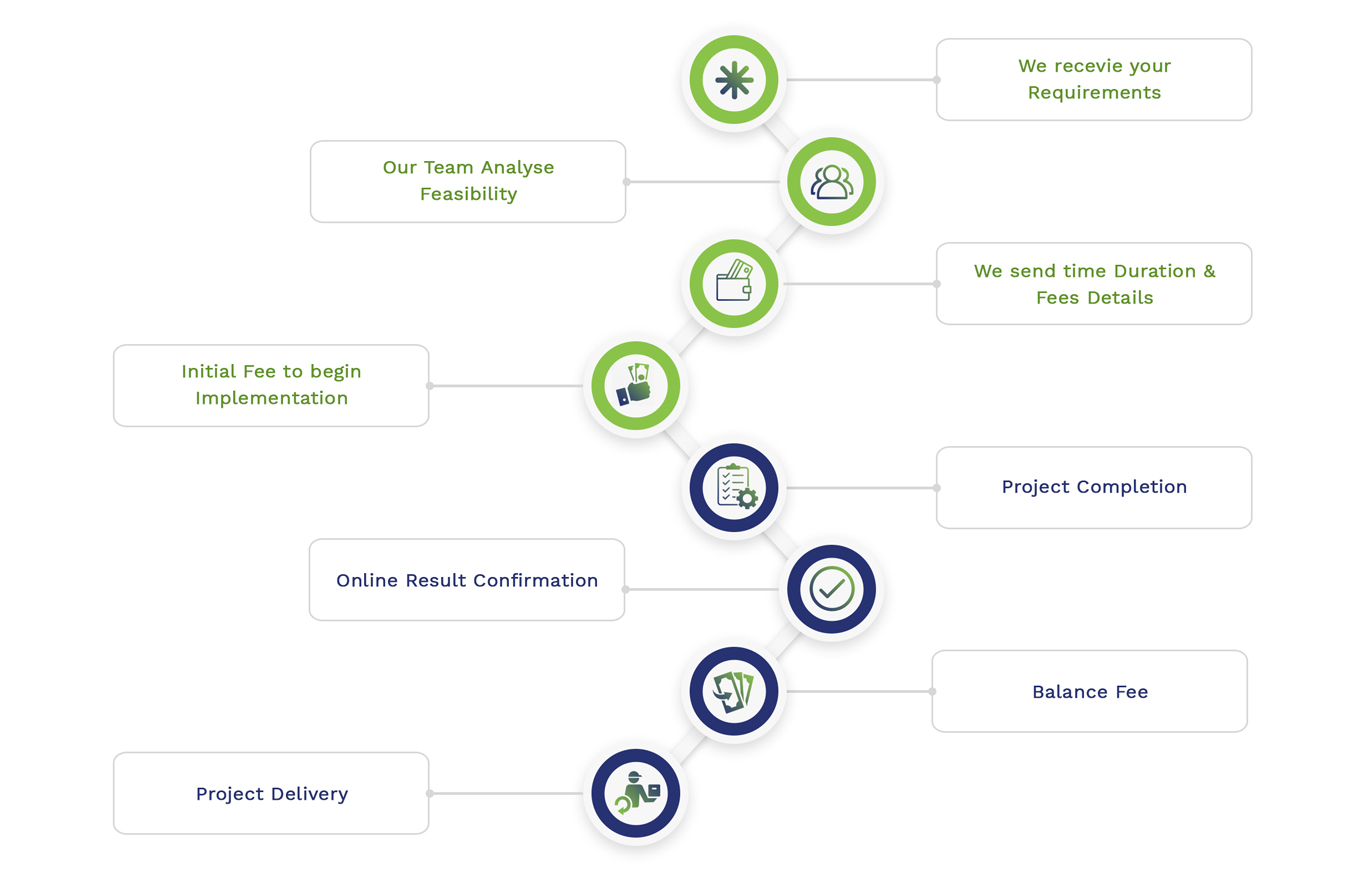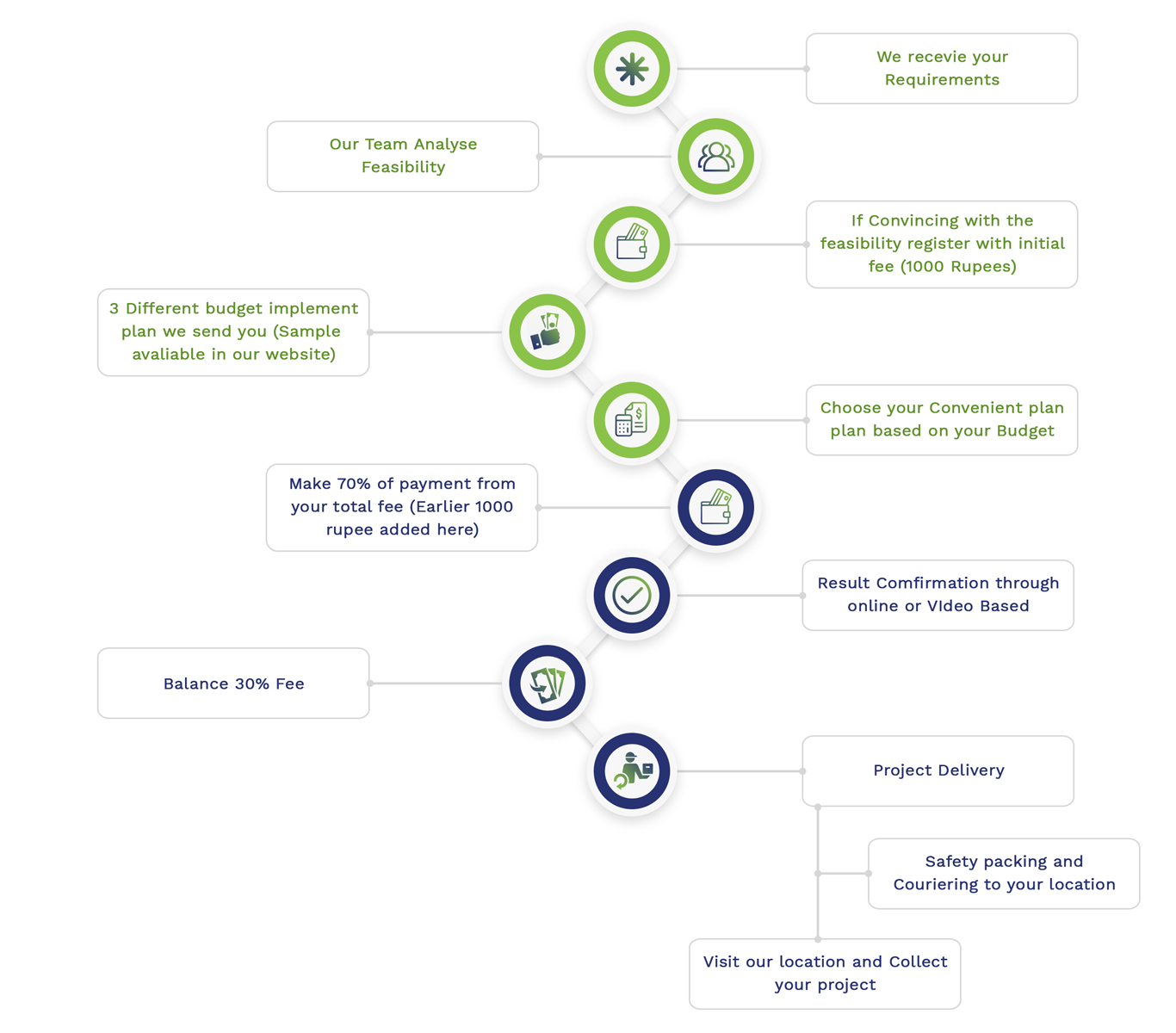Generally, the coronavirus disease (COVID 19) endures being a serious health risk for the public all around the world. By the way, it is a virus, it is essential to understand that viruses will change frequently and the different versions will keep on developing. Subsequently, we must be equipped with the whole thing to tackle it because of that. If you want to know more information about COVID 19 detection using image processing and novel technologies, then you can approach us. Let us take a look at some signs of the COVID 19 detection process and how we can handle it through this article.
What is COVID 19 Detection?
Segmentation is considered the primary phase in the process of image processing and interpretation to access and detect COVID 19. The significant factor for the AI algorithm is defined through this process and the regions of interest (ROIs) are apprehended through the chest CT images and X-ray images. The segmented regions are deployed to be the consequently handcrafted and self-learning features.
In specific, we have discussed the image-processing datasets which gain more importance in this research field. As matter of fact, it is deployed as the most essential part of the COVID 19 detection process.
Image Processing Datasets
- MaskedFace-Net
- Zhao dataset (COVID-CT dataset)
MaskedFace-Net
The MaskedFace-Net is denoted as the datasets that occurred in the human faces and that appropriately or inappropriately wear a mask and the datasets are collected in 133783 images which are related to the datasets Flickr-Faces-HQ (FFHQ). While wearing face masks it gives the solution for reducing the spread of COVID 19. Consequently, well-organized recognition systems are inspecting that people are wearing a mask in regulated areas. In addition, the massive dataset based on the masked faces are essential to training the models based on deep learning and it is functioning to detect the people who are wearing masks and not wearing a mask.
Zhao Dataset (COVID-CT Dataset)
COVID-CT dataset includes 349 CT images that are collected from patients who are affected by COVID 19. These datasets are created and publicly available through Zhao. The collected images are not captured in the same conditions and it includes the conditions such as image preprocessing, various resolutions for images, and more. The pulmonary infiltrates (PIs) and ground glass opacity (GGO) based on COVID-19-affected patients’ CT images are recognized through the deployment of datasets.
In addition, our experts have listed out a few image processing techniques that help the research scholars to get a clear vision of the current research in COVID 19 detection using image processing.
Image Processing Techniques
Image processing functions are effective through some significant techniques and the techniques like image analysis, trend removal, filters, and convolution edge detection. The operations based on image processing have some standard applications with the technologies in the real world which are related to the following elements.
- Segmentation
- Clustering
- Feature selection
- Feature extraction
- Classification
- Preprocessing
Consequently, we have highlighted the techniques based on image processing to detect COVID 19. In addition, all these image processing techniques are stated along with their specifications.
- Random forest algorithm
- Cascade classification algorithm
- FFT – Gabor scheme
- Superpixel-SLIC algorithm
Random Forest Algorithm
Random forest algorithm is considered as the machine learning technique which is deployed to elucidate the issues in the process of classification and registration. It includes the collaborative learning method and which is the technique that interprets various classifiers to provide an answer for multifaceted issues. Additionally, the random forest algorithm includes several decision trees. This algorithm is implemented by the researchers for the functions of severity analysis for COVID 19 patients along with the usage of computed tomography (CT) scans. Finally, it provides the random forest algorithm to provide accurate predictions of the imbalanced datasets too.
Cascade Classification Algorithm
The Cascade classification algorithm is used for the bifurcation detection process in the computed tomography angiography (CTA) scans based on the blood vessels. Mainly, this algorithm is used to analyze the vessels that are occurred around the trained classifier and that followed by the accurate segmentation process in the outer part of vessels through morphological active contour and that as no edges then to extract the boundary features to segment the classifiers with its shape by the utilization of approximate K-nearest neighbor classifier.
The algorithm is considered as the demonstration of promising and modest results in the blood vessels among various parts of the human body. The COVID 19 detection process includes the cascade classification process to interpret the deep learning algorithms along with the integrated learning algorithms that significantly enhance the prediction based on multi-classification with high accuracy.
FFT – Gabor Scheme
The FFT Gabor scheme is based on the frequency domain and that is related to the process of feature extraction scheme. In addition, it is deployed in the process based on COVID 19 detection through the feature extraction stage features the Fast Fourier transform (FFT) and wavelet. The result obtained through the performance of features through the frequency domain that is based on the FFT group which is considered as the most effective form while comparing with the extracted features through the spatial domain.
Superpixel-SLIC Algorithm
Generally, the SLIC algorithm is abbreviated as a simple linear iterative clustering algorithm. It is used in the process of CT images with COVID 19 based on pulmonary parenchyma segmentation. It is deployed to recognize the pulmonary parenchyma and the superpixel cluster is described as per the spatial context saliency, second-order texture, and grey intensity feature for the classification process through the tree random forest (TRF).
Subsequently, the watershed segmentation is applied for the mean shift clusters and merely the pulmonary parenchyma segmentation has recognized the zones that are displayed in the pulmonary infiltrates (PIs) and ground glass opacity (GGO). In addition, it is related to the description of all the watershed clusters with the position of its second-order texture, gradient entropy, Euclidean position for border region in the PI zone, position global saliency features, and grey intensity while using the TRF.
In the same way, we have also listed down the recent detection models with their performance features. For instance, we have enlisted a list of image-processing detection models used in the COVID 19 detection process.
Image Processing-Based COVID-19 Detection Models
- Image classification model
- Lung segmentation model
Image Classification Model
Hybrid 3D and fully 3D model processes are related to the Densenet -121 structural designs and are reformed to utilize the operations based on 3D operations like 3D convolutions and it is compared with the implementation of original 2D. HU range (1000, 500) is clipped to images and it is cropped with bounding the box fit for the maximum dimensions of the lung regions and it is extended with 5 voxel buffer. The resampling of the lung region has to the size of about 192 × 192 × 64 to train and inference process of a full 3D model. The images have to be resampled with the resolution of 1 mm × 1 mm × 5 mm and the sub crops of 192 × 192 × 32 are sampled in the lung region for the hybrid model. While applying the mask to acquire the tissues in the lungs in the frequency of 6 crops and patient training and 15 crops and patients at the inference.
The preconception at the center specific characteristics are avoided through the performance based on the data augmentation and it includes the process such as
- Rotation
- Flipping
- Intro for random Gaussian noise
- Contrast adjustment
- Image intensity
In every mini-batch, the data is sampled with confirmation of class balance among the COVID groups and the non-COVID groups. The regions are visualized through the activation of maps within the utilization of images to predict the Grad-CAM method that is generated in the system.
Lung Segmentation Model
The lung segmentation model is trained through the usage of structural design based on AH-Net. It is deployed to state the challenges based on GGO or the patterns of consolidation in the network trained with the LIDC dataset and it includes 95 CT volumes and 1018 images in the training set with a significant amount of GGO or consolidation notes to confirm the accurate segmentation in the huge proportion of modified parenchyma.
Two experts in radiology are essential for the manual data annotation process and the images are resampled with the resolution of 0.8 mm × 0.8 mm × 5.0 mm and the HU range is -1000, 500 for the clipped intensity. The usage is determined through the achieved mean of algorithm about 0.95 Dice in the validation with the similarity coefficient ranges up to 0.85–0.99, std. dev 0.06.
Additionally, the researchers have to know about the deployment of models to recognize the disease. So, let us take look into the specifications of the learning models that are used in the process of COVID 19 detection.
What are the Learning Models Used in COVID 19 Detection Processes?
- COVID-Net
- MobileNet-v2
- ResNet18
- Mobile Net
The above-mentioned models are designed to recognize COVID 19 pneumonia and the authors are using the same parameters for the models. Then, the simulation execution is completed with the result of the recognition of the fastest model. Thus, the fastest model is the ResNet18 model.
Up to now, we have discussed many key features and technologies used to detect COVID 19. Our experts are intense to provide the best research ideas according to your requirements.If you have your ideas then our research professionals are ready to assist you to get better results by using suitable modules, programming languages, tools information, and mathematical analysis. At this point, we have highlighted some significant tools used in COVID 19 detection using image processing.
Image Processing Tools Used in Covid 19 Detection Using Image Processing
- ImageJ
- Matlab
ImageJ
ImageJ is denoted as the java-based image processing program and while processing the detection process of COVID 19, the signal intensities are based on the lateral flow strips and they are quantified through the imageJ. In addition, it is utilized for the processes such as.
- Save raster image data
- Column
- Row
- Process
- Analyze
- Measure
- Calibrate
- Edit
- Annotate
- Display
COVID 19 Detection Using ImageJ
SARS-CoV-2 infection is interpreted with the COVID 19 disease and rapidly spread over the world to create a global pandemic. The researchers are authenticating the methods that are used as the artificial reference samples and the clinical samples through the patients and this process includes 36 patients who are affected by COVID 19 and 42 patients who are affected by various viral infections in the respiratory system.
The simulation is implemented and the lateral flow strip is added en route for the reaction tube with the visualization of results. Then, the lateral flow strips are visually inferred or quantified with the usage of the gel analyzer tool, and signals based on ImageJ are normalized to the signal intensity up to the maximum level.
Matlab
Matlab is one of the significant tools used to create applications based on image processing and it is deployed in the research process to enable prototyping as the fastest process. In addition, the Matlab code is concise while it is compared with C++ and it is denoted as a captivating standpoint. Along with that, it is making some easy processes to examine and troubleshoot. It is used to regulate the error that occurred in the implementation process and follow some methods to make the code speed process. Matlab is deployed with a process based on all the images including,
- Feature extraction
- Image preprocessing
- Segmentation
COVID 19 Detection Using Matlab
RGB image in the chest CT scan is used as the input to click the uploaded image. The application is used to detect the virus by examining the features based on the virus region detection through the image analysis process. FilterRegions is one of the Matlab processes and it is used to filter the BW image with the deployment of auto-generated code for the imageRegionAnalyzer app. It is based on the parameters that filter binary image BW_IN through the auto-generated code through the imageRegionAnalyzer app.
BW_OUT includes several options in the filtering selections and they are used to specify the imageRegionAnalyzer. The structure of PROPERTIES includes some characteristics based on BW_out and it is visible in the application. While implementing the functions based on segmentImage, the final segmentation is reverted in BW and the masked images are revered in the form of MASKEDIMAGE. Additionally, the trainClassifier is functioning and it yields the trained classifiers with accuracy.

Here, our experts have given you some information about the image processing steps which helps research scholars get tuned results in their research projects based on COVID 19 detection. In this way, we have mentioned the suitable steps with their specifications in the following.
Image Processing Steps for COVID 19 Detection
- GGO and PI identification in pulmonary parenchyma
- Image over-segmentation
- Pulmonary parenchyma identification
GGO and PI Identification in Pulmonary Parenchyma
The zone based on pulmonary parenchyma in the CT image was recognized and it is capable to initialize the segmentation-based watersheds to this zone. The watershed lines were used to acquire some pixels to separate the neighboring catchment basins. In addition, it categorizes the various parts of images through their features. The oversegmentation is clustered with the obtained mean shifts and it is paying attention to recognize the region of interest using the process such as,
- PIs
- It includes the denser areas along with the intensity of pixel area and it is higher than the outer area
- It is used to forecast the well-delimited images around the infiltrate boundaries and high-gradient image
- GGO
- It is textured
- This process is used to predict the paralleled features in both the well-delimited and high-gradient image
Image Oversegmentation
It includes the setting of the two least significant bits for all the pixels and channels about 0 through abbreviating the input grey images. In addition, it includes the 64 levels while obtaining the images. 0, 4, 8, ……. , 252 are codes for these images to denote simplicity. It is used to adopt the normalization in CT input images along with it the noise and inappropriate details are removed. The process is deployed to result in the accurate segmentation for recognition of pulmonary parenchyma in CT imaging.
Pulmonary Parenchyma Identification
The regroup process is created with the over-segmented image clusters and it collects the pixels into regions along with the parallel values related to the proximity, intensity, and similarity based on the image joint spatial. Then, it obtains the average value of all the new objects with the deployment of over segmented images. The novel images include the background of body parts and grouped pulmonary parenchyma parts. Additionally, it is capable to extract the features for the classification process and it is categorized into the pulmonary parenchyma and non-pulmonary parenchyma. The features such as,
- Spatial context saliency
- Texture
- Grey intensity
- Position
For your quick understanding and to make the complex task topic selection a simple process, we have listed a list of research best PhD topics based on COVID 19 detection using image processing.
What are the COVID 19 Detection Projects in Image Processing?
- COVID 19Net: Deep neural network for COVID 19 diagnosis through chest radiographic images
- Diagnosis of COVID 19 with a deep learning approach on chest CT slices
- Diagnosis of COVID 19 from chest X-ray images using wavelets based depth wise convolution network
- Identifying facemask wearing condition using image super-resolution with the classification of the network to prevent COVID 19
- Recognizing COVID 19 positive through CT images
In addition to this, our research professionals have enlisted the topical research project topics based on COVID 19 detection using image processing and we have stated the research topics along with its implementation process in the following.
Research Topics for COVID 19 Detection
- COVID 19 pneumonia detection using optimized deep learning techniques
- COVID 19 detection using federated machine learning
COVID 19 Pneumonia Detection Using Optimized Deep Learning Techniques
In the early days, the medical system undergoes manual diagnosis and classification for COVID 19 pneumonia and some particular personnel is essential to process this. In addition, it is an even more costly and time-consuming process. Thus, this system is the proposition of a novel optimized deep learning approach used for the automatic diagnosis and classification of COVID 19 pneumonia through X-ray images. This research process is using the publically available datasets based on the chest X-rays on Kaggle.
These datasets are developed through the three significant stages in the expedition to include the unified COVID 19 entities dataset accessible for the researchers. Data augmentation is applied in this process and it is used to increase the dataset size to develop the reliability of results through overfitting prevention. The dataset contains 21165 anterior-to-posterior and posterior-to-anterior chest X-ray image classifications such as,
- Viral pneumonia – 6%
- Lung opacity – 28%
- COVID 19 – 17%
- Normal – 48%
COVID 19 Detection Using Federated Machine Learning
Generally, COVID 19 is a pandemic and it threatens the life, productivity, and health of human beings. This proposed system includes the efficacy of federated learning against traditional learning through evolving two machine learning models along with the chest X-ray images and descriptive datasets from the patients affected by COVID 19. The machine learning models such as,
- A traditional machine learning model
- Federated learning model
This process starts with the model training stage and here we can search the factors that are affecting the prediction accuracy in the model and the loss such as,
- Data size
- Number of rounds
- Learning rate
- Model optimizer
- Activation function
To guarantee the standard of our research undertakings, we continuously update our skills with recent technological innovations. From this study, we are acquainted with so many interesting integrations of COVID 19 detection using image processing with its performance factors. For example, we have highlighted some research notions based on COVID 19 detection using CT images.
Sample CT Images based COVID 19 Detection Topics
- Discerning COVID 19 from mycoplasma and viral pneumonia on CT images through the deep learning process
- COVID 19 chest CT image segmentation network through multi-scale fusion and development operations
- Classification of COVID 19 CT images using transfer learning models
- Deep residual neural network-based standard CT estimation from ultra-low dose CT imaging for COVID 19 patients
- Deep learning-based diagnosis of COVID 19 using chest CT scan images
- A two-dimensional sparse matrix profile dense net for COVID 19 diagnosis using chest CT images
- A novel deep convolutional neural network model for COVID 19 disease detection
On the whole, we have discussed all the required phases involved in COVID 19 detection using image processing. We have more than 100+ research experts to provide research innovations and research guidance. We are not subject to these services but also masters in thesis writing, assignment writing, paper writing, proposal writing, journal paper publication, and more. Generally, we are an organization with massive research masters and technical experts to deliver projects for researchers within the time given. If you are interested in preceding with your research then you can approach us. We are always there to assist you.
Subscribe Our Youtube Channel
You can Watch all Subjects Matlab & Simulink latest Innovative Project Results
Our services
We want to support Uncompromise Matlab service for all your Requirements Our Reseachers and Technical team keep update the technology for all subjects ,We assure We Meet out Your Needs.
Our Services
- Matlab Research Paper Help
- Matlab assignment help
- Matlab Project Help
- Matlab Homework Help
- Simulink assignment help
- Simulink Project Help
- Simulink Homework Help
- Matlab Research Paper Help
- NS3 Research Paper Help
- Omnet++ Research Paper Help
Our Benefits
- Customised Matlab Assignments
- Global Assignment Knowledge
- Best Assignment Writers
- Certified Matlab Trainers
- Experienced Matlab Developers
- Over 400k+ Satisfied Students
- Ontime support
- Best Price Guarantee
- Plagiarism Free Work
- Correct Citations
Expert Matlab services just 1-click

Delivery Materials
Unlimited support we offer you
For better understanding purpose we provide following Materials for all Kind of Research & Assignment & Homework service.
 Programs
Programs Designs
Designs Simulations
Simulations Results
Results Graphs
Graphs Result snapshot
Result snapshot Video Tutorial
Video Tutorial Instructions Profile
Instructions Profile  Sofware Install Guide
Sofware Install Guide Execution Guidance
Execution Guidance  Explanations
Explanations Implement Plan
Implement Plan
Matlab Projects
Matlab projects innovators has laid our steps in all dimension related to math works.Our concern support matlab projects for more than 10 years.Many Research scholars are benefited by our matlab projects service.We are trusted institution who supplies matlab projects for many universities and colleges.
Reasons to choose Matlab Projects .org???
Our Service are widely utilized by Research centers.More than 5000+ Projects & Thesis has been provided by us to Students & Research Scholars. All current mathworks software versions are being updated by us.
Our concern has provided the required solution for all the above mention technical problems required by clients with best Customer Support.
- Novel Idea
- Ontime Delivery
- Best Prices
- Unique Work
Simulation Projects Workflow

Embedded Projects Workflow



 Matlab
Matlab Simulink
Simulink NS3
NS3 OMNET++
OMNET++ COOJA
COOJA CONTIKI OS
CONTIKI OS NS2
NS2






